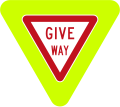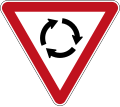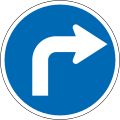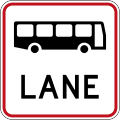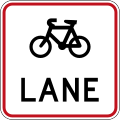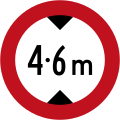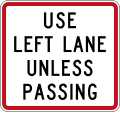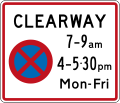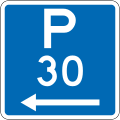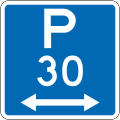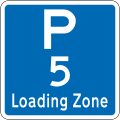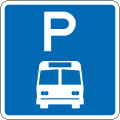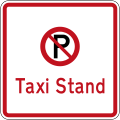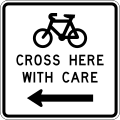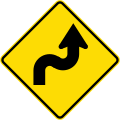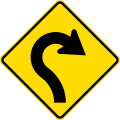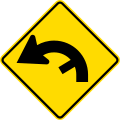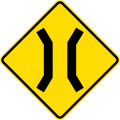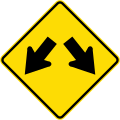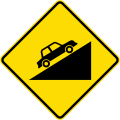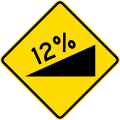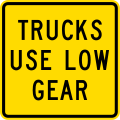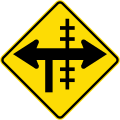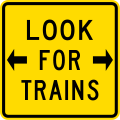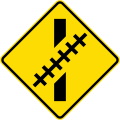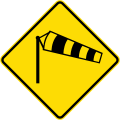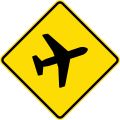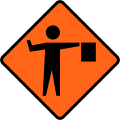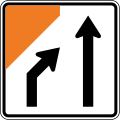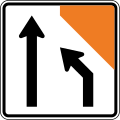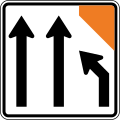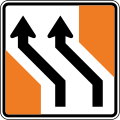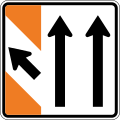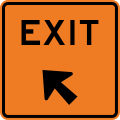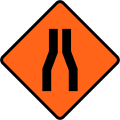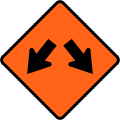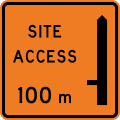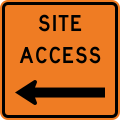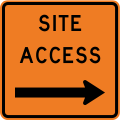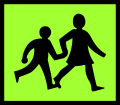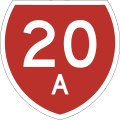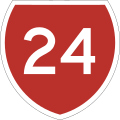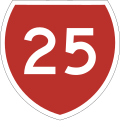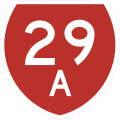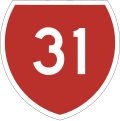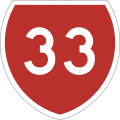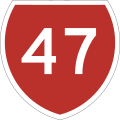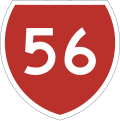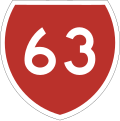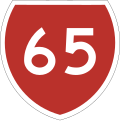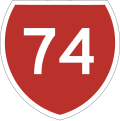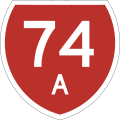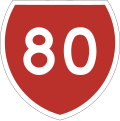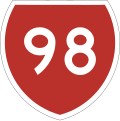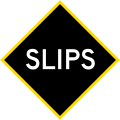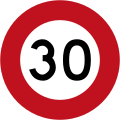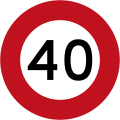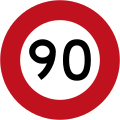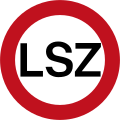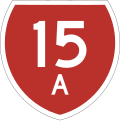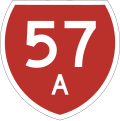
Road signs in New Zealand are similar to those set by the Vienna Convention on Road Signs and Signals. While New Zealand is not a signatory to the convention, its road signs are generally close in shape and function. New Zealand uses yellow diamond-shaped signs for warnings in common with Australia, the Americas, Ireland, Japan and Thailand. Speed limit signs are a red circle with a white background and the limitation in black, and are in kilometres per hour. There are also some signs unique to New Zealand. Road signs in New Zealand are controlled by NZ Transport Agency Waka Kotahi and are prescribed in the Land Transport Rule: Traffic Control Devices 2004 and set out in the Traffic Control Devices (TCD) Manual. [1]
Contents
- Regulatory signs
- Parking signs
- General advisory
- Warning signs
- Temporary warning signs
- Vehicle Mounted
- Route marker shields
- Retired signs
- 1928 road signs
- 1933 road signs
- 1966 road signs
- Obsolete speed limit signs
- Obsolete route marker shields
- Location Referencing Management System (LRMS)
- Established Route Position (ERP)
- Kilometre Marker Post (KMP)
- Reference Station (RS)
- See also
- References
Most of these signs were only introduced between 1987 and 1990, replacing older-style signs with white text on black backgrounds: square with a red border for regulatory signs and diamond with a yellow border. Warning signs and the Give Way sign were replaced from 1987, regulatory signs from 1989, and parking signs from 1990. [2] The only signs that remained the same were the Stop sign and the speed limit sign (although the "km/h" legend from metrication was removed). Some of the older signs can still be seen on some rural roads. New Zealand drives on the left.
Speed limits are posted in multiples of 10 kilometres per hour [km/h] (6.2 mph), and range from 10–110 km/h (6–68 mph), with 110 km/h being the maximum legal speed for motor vehicles in New Zealand. The Manual of Traffic Signs and Markings specifies that advisory speeds (PW-25) always end in digit "5", however there are some advisory speed signs that do not comply with the manual and end in zero. [3]
In 2023, the then Labour government made moves to have bilingual road signs with English and Māori. [4] [5] One poll found 48% of the New Zealand public supported the idea, with 44% opposing. Another poll found 32% were in support and opposition was at 45%. [6] [7]




























